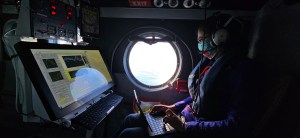3 min read
Amendment 31: DRAFT Ecological Conservation Catalyst Program Elements (A.61-A.64) Released for Community Comment.
NASA's Earth Science Division (ESD) is beginning a new initiative called "Catalyst" that will develop an Earth System Observatory to catalyze biodiversity conservation at large scales, starting in the state of California. To this end, ESD plans to solicit four new Ecological Conservation Catalyst (ECC) program elements in ROSES-2023: A.61 ECC Central Office, A.62 ECC Feasibility Projects, A.63 ECC Champion Activities, and A.64 ECC Dynamic Media, see below.
ROSES-2023 Amendment 31 releases drafts of these four new Ecological Conservation Catalyst (ECC) program elements (A.61-64) for community comment. Questions and comments on these drafts are due by August 15th, 2023, via email to keith.gaddis@nasa.gov and cc woody.turner@nasa.gov. Please identify the name of the program element in the subject line of the email (e.g., A.61 Central Office, A.62 Feasibility etc.). Comments may be used to inform the final text and a Q&A document for this program element.
There will be an informational teleconference to discuss these drafts on Monday, July 31, noon – 2:00 pm Eastern Time. Connect information will be posted under other documents on the NSPIRES page for these program elements no later than July 15, 2023.
A.61 ECC Central Office will solicit proposals for a management body to lead, develop, implement, and manage outreach, coordination, partnership development, funding, and capacity building for Catalyst. This central office will enable and enhance sustained uses of Earth science information for the advancement of conservation practices by public and private organizations in California. NASA ESD anticipates awarding one cooperative agreement to run the central office for a 5-year term at approximately $1.5M per year.
A.62 ECC Feasibility Projects will solicit proposals to demonstrate what the next generation of Earth observing capability and in situ monitoring will enable for scientific discovery and conservation application. These projects will begin in the very early stage of the development cycle to integrate unique cutting-edge in situ and airborne datasets with NASA Earth observing capability to enable conservation decision-making. These feasibility efforts will cross-leverage existing networks, monitoring systems, and consortia in California to demonstrate the next generation of Earth observing capability we hope will one day be available across the globe.
A.63 ECC Champion Activities will solicit proposals that will demonstrate near-term benefits of using Earth observations for conservation decision-making. These activities will begin having already undergone development and leveraging existing integrated datasets, platforms, and tools to address the immediate needs of conservation decision-makers in California. Champion Activities should begin at a high level of technological and applications readiness.
A.64 ECC Dynamic Media will solicit proposals to communicate Catalyst achievements, demonstrate the ability of cross-leveraged platforms to visualize the complex natural histories of California and the surrounding Western US, convey the pressing need for new integrated systems, and demonstrate the impact existing systems can have on informed conservation.
For planning purposes, the anticipated proposal due dates are currently:
A.61 ECC Central Office: January 2024,
A.62 ECC Feasibility Projects: April 2024,
A.63 ECC Champion Activities: April 2024,
A.64 ECC Dynamic Media: May 2024.





























